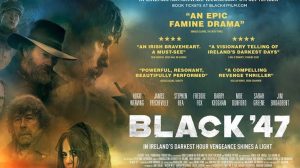Ok so we all know about what the main players in movie making do? The actors provide the performance and portray the characters, the director interprets the script and tells the overall story, and the sound technician makes sure everything sounds clear and is as authentic as possible. But what about the other unsung heroes, that we don’t necessarily see or hear?
First of all, the editor doesn’t work on the set or in production as it is commonly called in the industry. He or she starts his work for the most part when the shooting is complete for the day. The editor is involved in work called post-production.

The editor works at a computer mainly with a director as a consultant. The director is the boss and collaborates with the editor to produce what the filmmaker intended. The editor has the responsibility of arranging all the rushes, or shots filmed into an amazing story; like using jigsaw pieces to make an overall picture. This work has to be exact and demands enormous time, patience and attention to detail. Special editing software such as Final Cut Pro and Avid are used to facilitate the editing process, which can take weeks or months depending on the time available on the project. The director and editor are a team, and they need to be on the same page both artistically and technically. Needless to say, a huge amount of the rushes are not used or are disposed of. Good editing makes the film play seamlessly, and at no stage should the audience notice that the story unfolding before them has been technically produced or edited at all. Filmgoers are very savvy and will notice bad editing immediately.
Unfortunately a director’s vision can get compromised in the editing process not by an editor but by a producer who is responsible for selling and marketing the film. There have been countless cases in Hollywood where the producers have intervened in the editing to make it more marketable, and the director’s unique take has been altered. In most cases changes are made by the producer to make the film shorter and less than 2 hours. In many instances we sometimes see a Directors Cut version of a film being released on a DVD format to accompany the theatrical version that the producer gives the green light to.
Many famous movies have had a separate directors cut; including Ridley Scott’s Alien (1979) James Cameron’s Terminator 2: Judgement Day (1991) and William Freidkin’ s The Exorcist. (1973)

One of the most famous editors in Hollywood today is Thelma Schoonmaker; the long time collaborator with director Martin Scorsese. Film classics such as- Goodfellas, Taxi Driver and more recently The Departed and The Wolf of Wall Street are proof that Thelma is one of the most skilled and gifted editors working in motion pictures today. A relationship that has spanned over 40 years; Scorsese trusts his editor implicitly. In a Schoonmaker interview with the LA Times, Martin was quoted as saying-
“If something happened on the set, the person doesn’t know that when they see the footage or the rushes, She’ll respond to what works and what doesn’t, which keeps me balanced.”
“You get worn down some of the times. I have been making a lot of films. I still like to make them, which means I still like the process. But you do get distracted. There are many, many pressures and stresses, of course, with different issues. So I really rely on her to keep the emotional continuity of the picture.”
The artist behind the scenes; the editor truly is the invisible, silent filmmaker that you could bump into on the street and not realise it.











